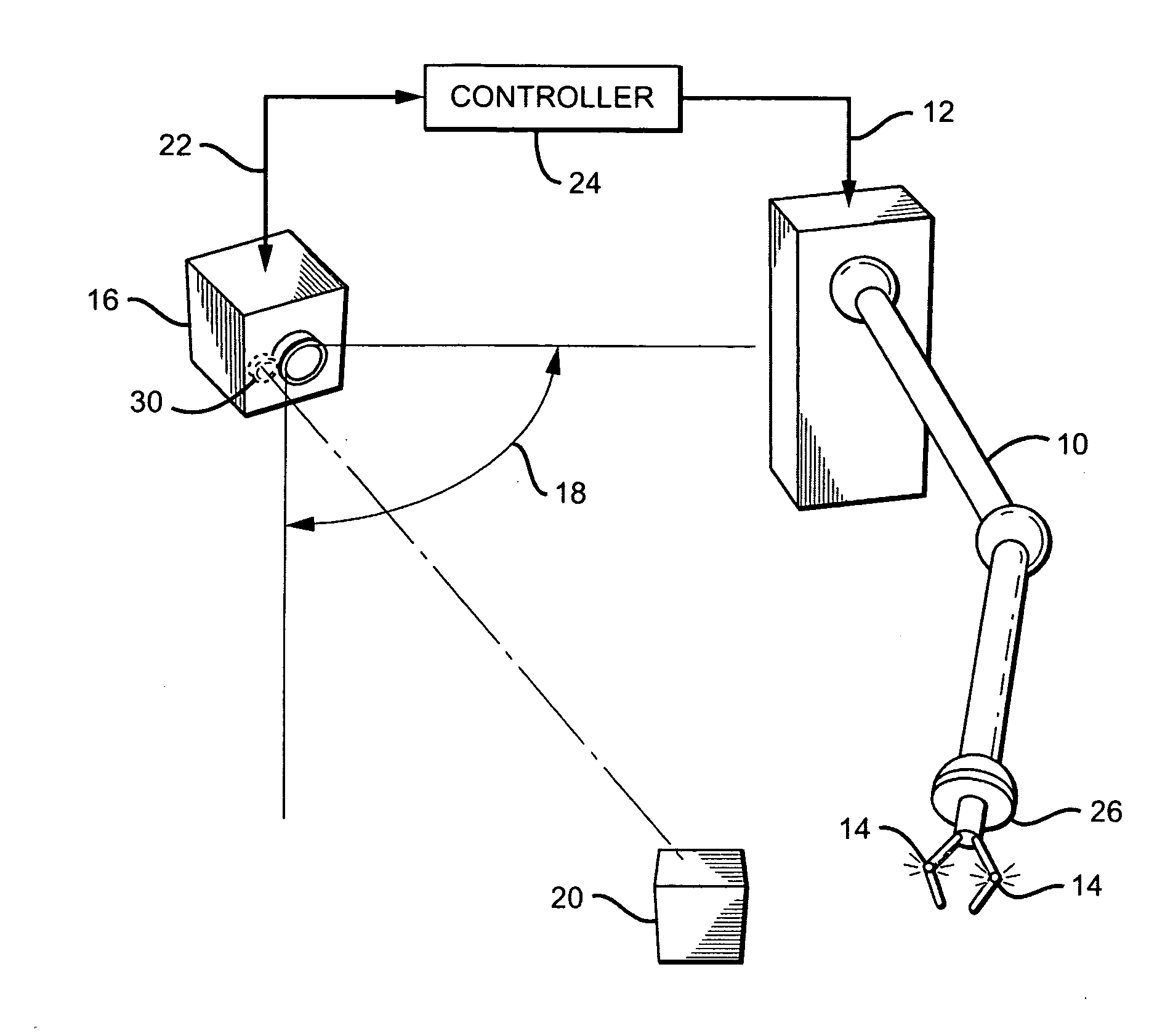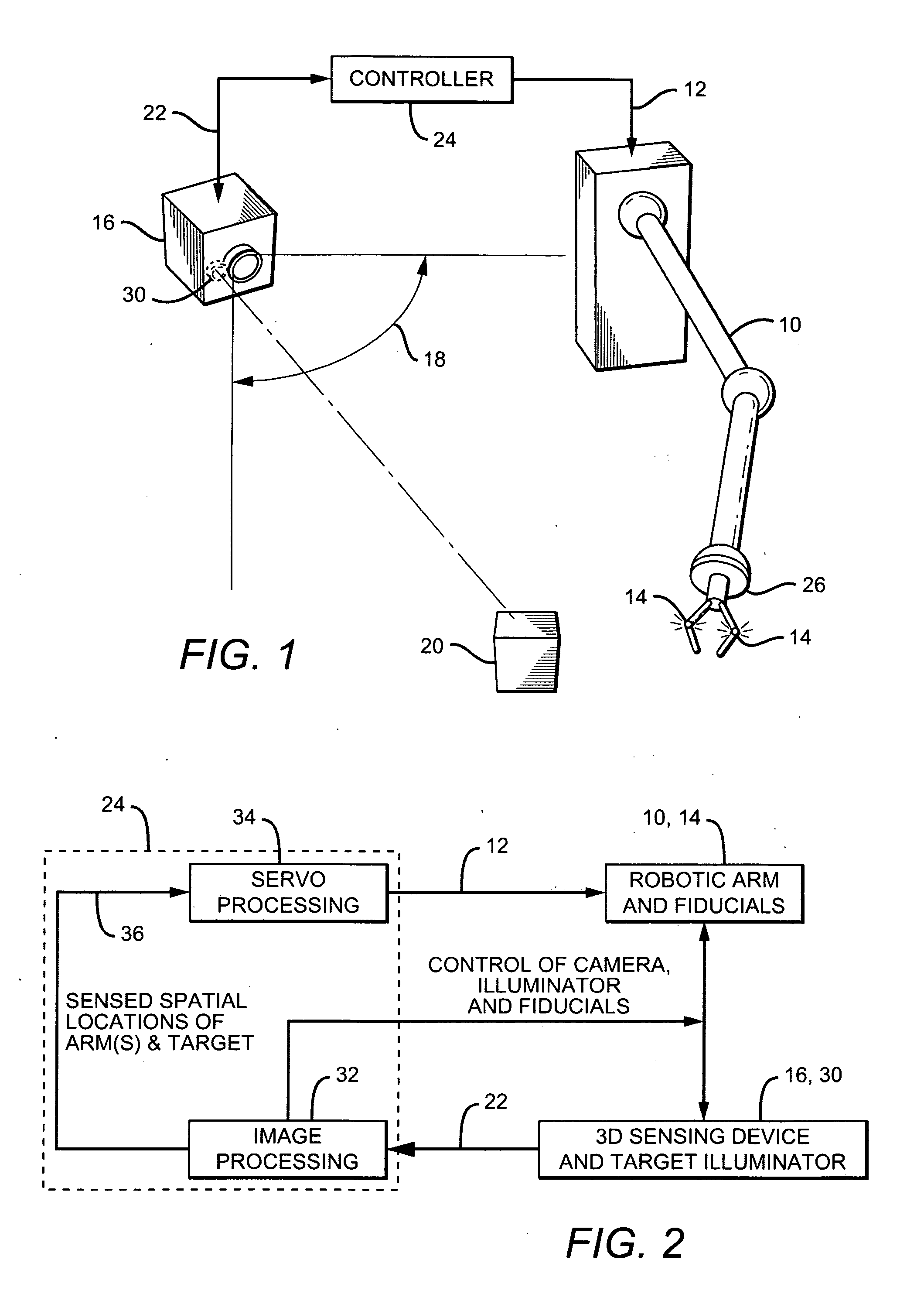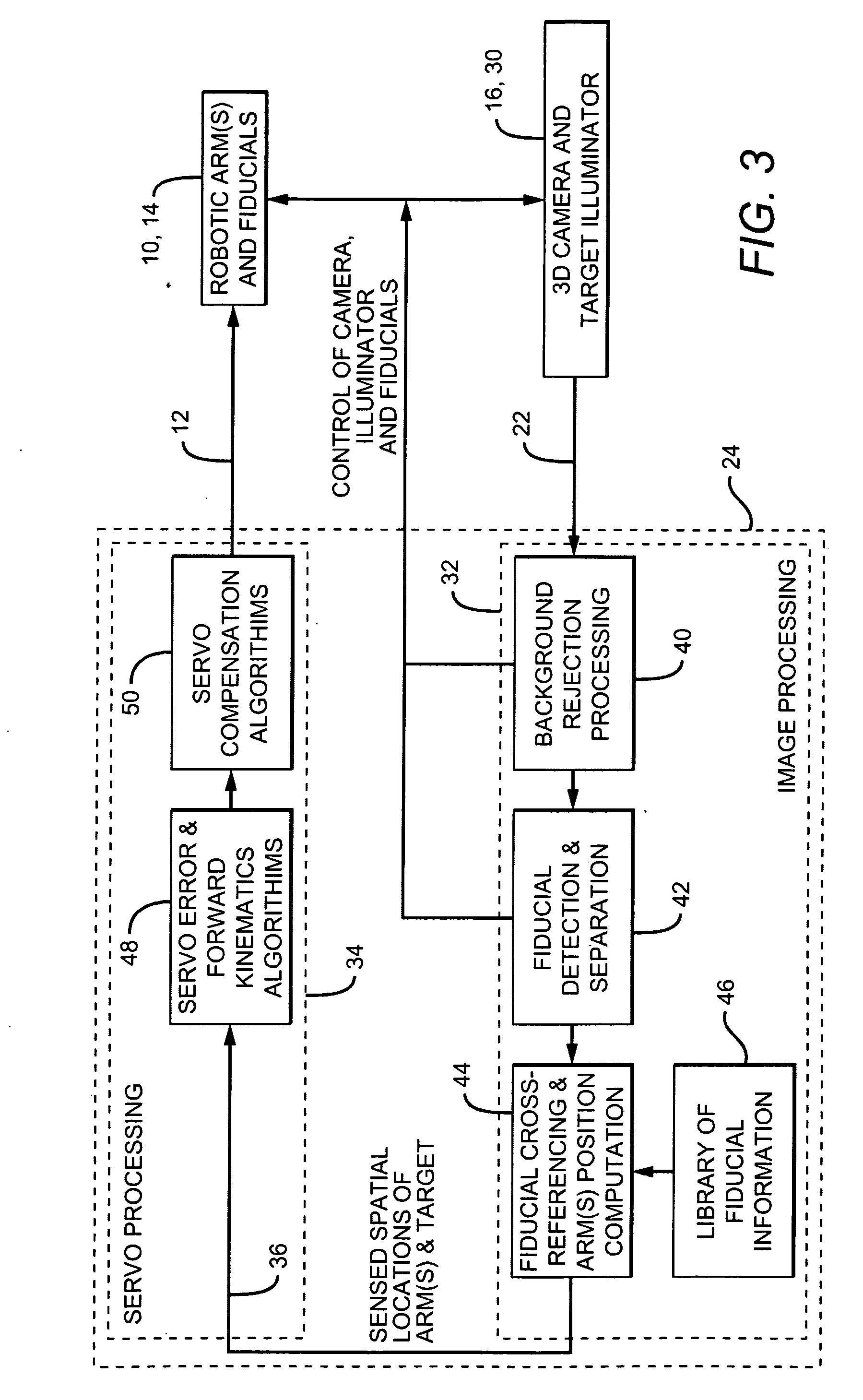Robotic arm and control system
a robot arm and control system technology, applied in the field of robot arms and systems, can solve the problems of position accuracy requirements, degraded accuracy with which an arm can be positioned, and inability to achieve accurate positioning and movement of effectors, so as to achieve efficient and accurate effector positioning and movemen
- Summary
- Abstract
- Description
- Claims
- Application Information
AI Technical Summary
Benefits of technology
Problems solved by technology
Method used
Image
Examples
Embodiment Construction
[0019]The basic configuration of a robotic arm and control system in accordance with the present invention is shown in FIG. 1. The system includes a robotic arm 10 which moves in response to one or more command signals 12. There is at least one “active” fiducial 14 located on robotic arm 10. As used herein, an “active” fiducial is one that emits its own light—i.e., it is self-illuminating.
[0020]The system also includes a 3D sensing device 16 having an associated field-of-view (FOV) 18, positioned such that at least one of the fiducials 14 on arm 10, and a target object 20 to be manipulated with the arm, are in the sensing device's FOV. 3D sensing device 16 is preferably a 3D camera, though other types of devices, such as [??], could also be used. However, for simplicity, sensing device 16 is referred to as a 3D camera hereinafter.
[0021]The fiducials are preferably controllable—i.e., they can be activated and deactivated on demand. To determine the spatial positions of the arm and ta...
PUM
 Login to View More
Login to View More Abstract
Description
Claims
Application Information
 Login to View More
Login to View More - R&D
- Intellectual Property
- Life Sciences
- Materials
- Tech Scout
- Unparalleled Data Quality
- Higher Quality Content
- 60% Fewer Hallucinations
Browse by: Latest US Patents, China's latest patents, Technical Efficacy Thesaurus, Application Domain, Technology Topic, Popular Technical Reports.
© 2025 PatSnap. All rights reserved.Legal|Privacy policy|Modern Slavery Act Transparency Statement|Sitemap|About US| Contact US: help@patsnap.com



